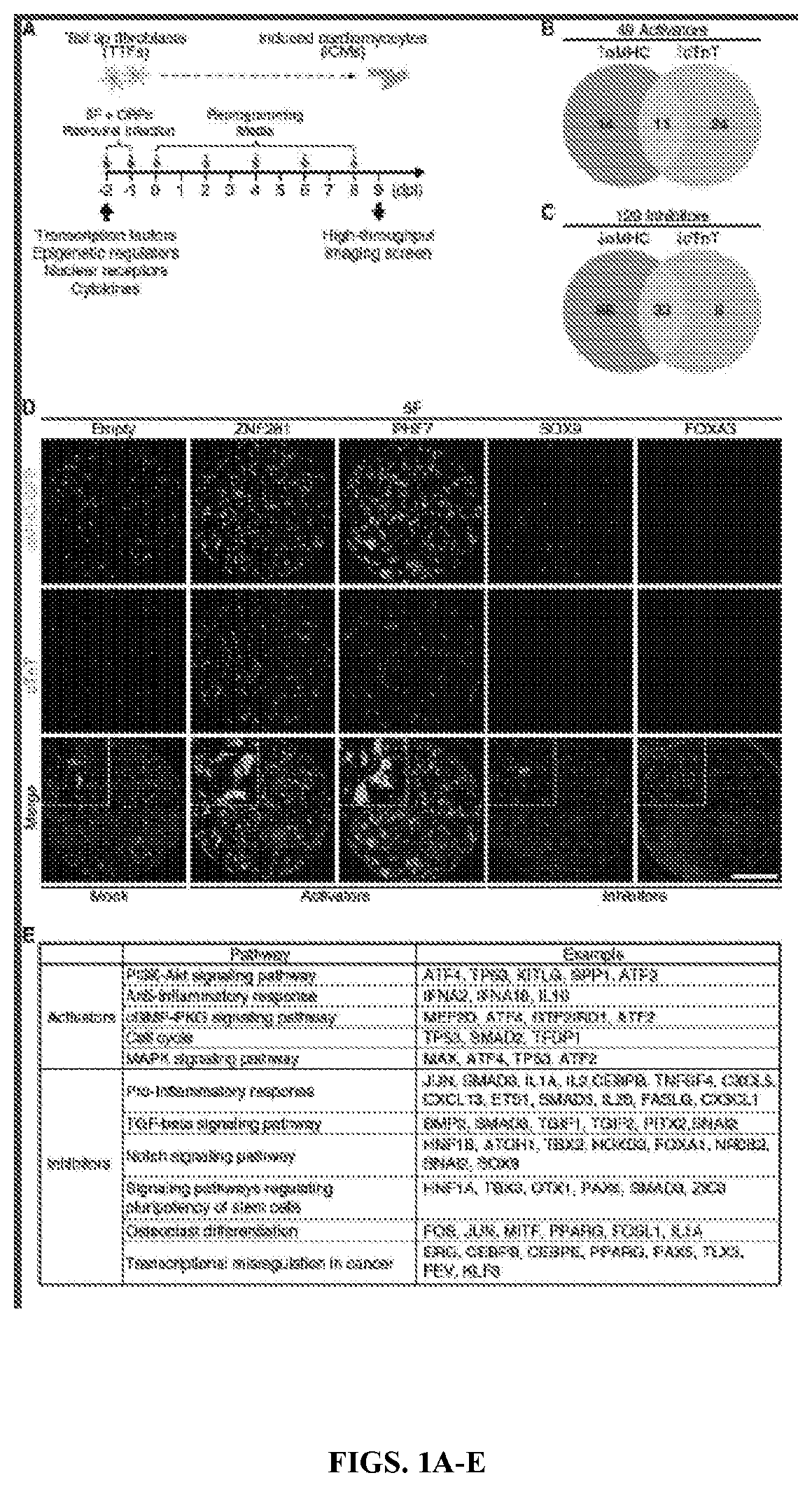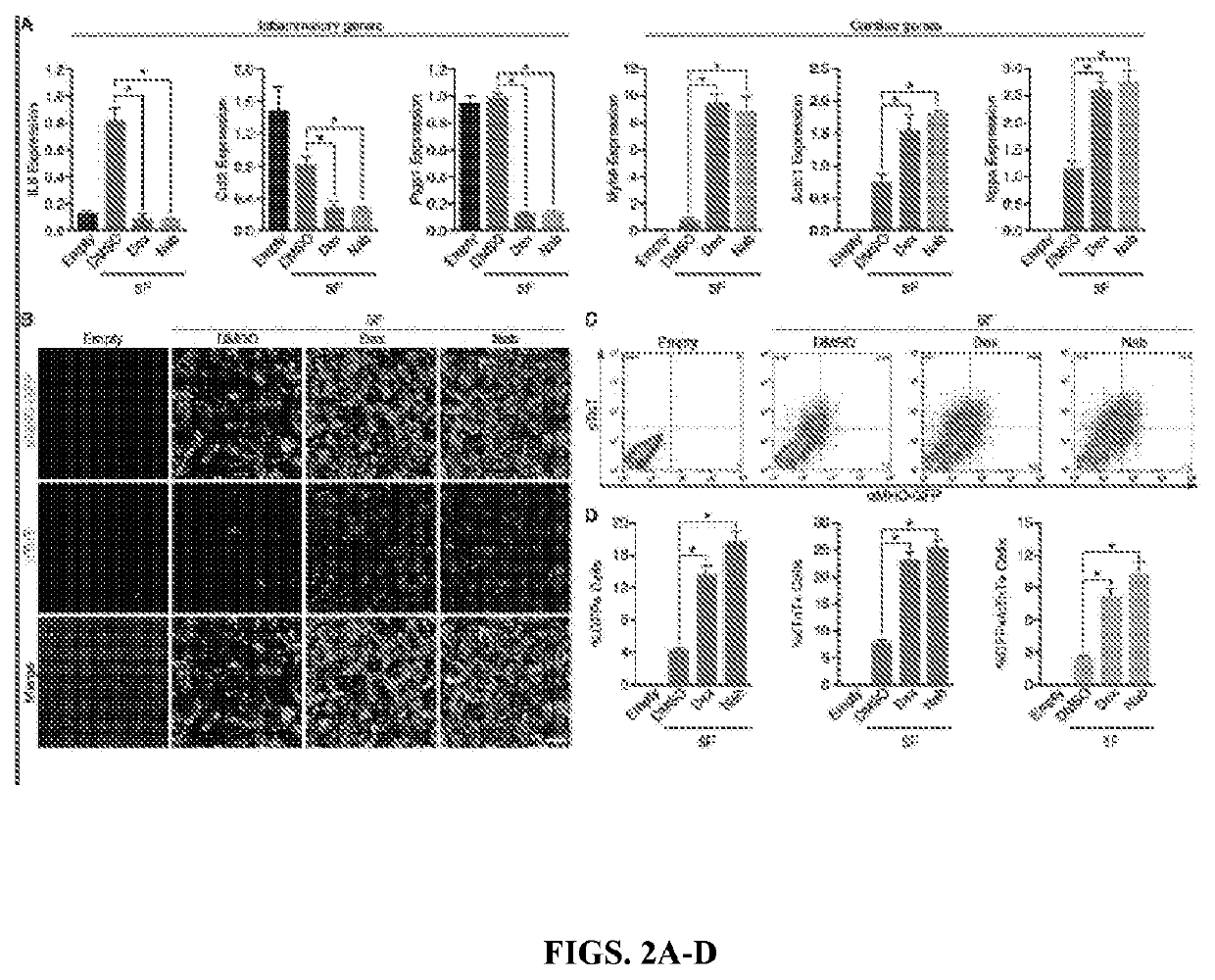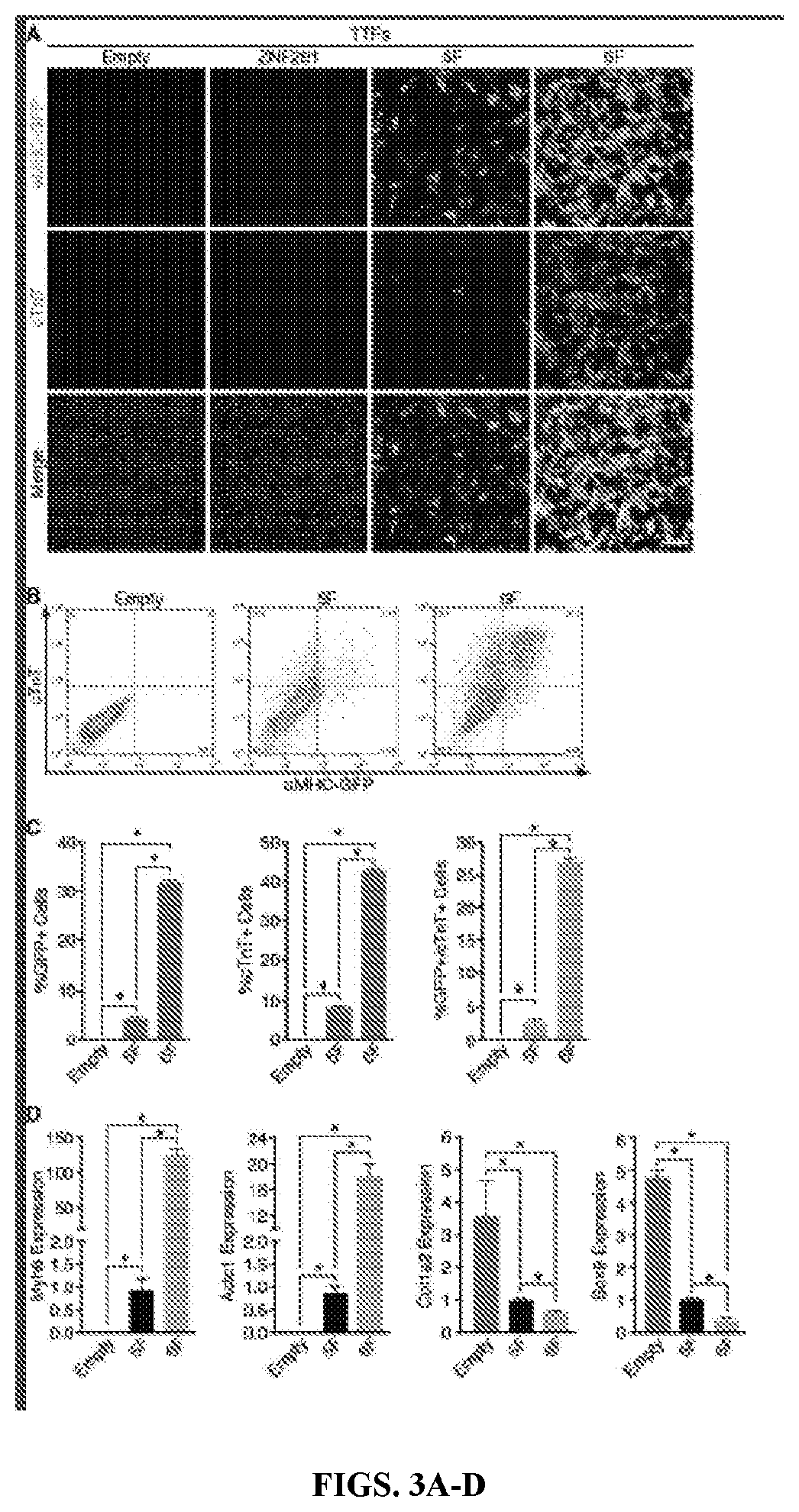Cardiac repair by reprogramming of adult cardiac fibroblasts into cardiomyocytes
a cardiomyocyte and adult cardiac fibroblast technology, applied in the field of cardiac disease, can solve the problems of low efficiency and inability to understand the molecular basis of the reprogramming process, affect the contractility of a large portion of the heart muscle, and the reprogramming cocktail is still relatively inefficient, so as to reduce the hospitalization of a subject, improve the quality of life, and reduce the effect of exercise toleran
- Summary
- Abstract
- Description
- Claims
- Application Information
AI Technical Summary
Benefits of technology
Problems solved by technology
Method used
Image
Examples
example 1
[0256]Animals. Animal work described in this study has been approved and conducted under the oversight of the University of Texas Southwestern Institutional Animal Care and Use Committee.
[0257]Isolation of mouse tail-tip fibroblast. For isolation of adult mouse tail-tip fibroblasts, tails were cut from 8-12 weeks old adult wild-type or αMHC-GFP mouse and were minced into 1-cm pieces with razor blades after peeling off the superficial dermis. The minced tails were placed in fibroblast growth medium (DMEM supplemented with 10% FBS and 1% (vol / vol) penicillin / streptomycin). Tail-tip fibroblasts migrated out from the explants within 1 week and were passaged one time before use.
[0258]Construction of human retroviral ORFs library. Gateway-compatible Human ORFs pEntry vectors were purchased from Thermo Fisher Scientific. Gateway-compatible retroviral destination vector, pMXs-gw, was a gift from Shinya Yamanaka (Addgene plasmid #18656) (Takahashi, 2006). The inventors transferred each ORF i...
example 2
[0267]Identification of activators and inhibitors of cardiac reprogramming in adult fibroblasts. The inventors' previously optimized cardiac reprogramming protocol with five factors (AGHMT, also called 5F) was able to reprogram ˜3% efficiency of adult TTFs to iCMs as measured by activation of a cardiac-specific αMHC-GFP transgene and cardiac troponin T (cTnT) immunostaining (Zhou et al., 2015). To identify additional regulators of cardiac reprogramming, the inventors created a retroviral expression library consisting of 1,052 open reading frame (ORF) cDNAs representing 786 human transcription factor, cytokine, epigenetic regulator and nuclear receptor genes (Table 51). The inventors screened this expression library for activators and inhibitors of cardiac reprogramming by expressing individual cDNAs together with 5F in isolated TTFs from αMHC-GFP mice, as schematized in FIG. 1A. After 9 days, a high-throughput cell analyzer system was used to image and quantify cardiac reprogramming...
example 3
n
[0285]Here, the inventors performed an unbiased screen for regulators of adult cardiac reprogramming and identified 178 new activators and inhibitors that belong to various biological pathways. These different regulators revealed that anti-and pro-inflammatory factors evoke opposing effects on cardiac reprogramming. The inventors found that pro-inflammatory molecules prevented reprogramming, whereas anti-inflammatory drugs enhanced cardiac reprogramming. Among the identified activators, the zinc finger transcription factor ZNF281 showed the most potent stimulatory activity. The effect of ZNF281 on cardiac reprogramming appears to be mediated by association with GATA4 on cardiac enhancers and by inhibition of inflammatory signaling, which antagonizes cardiac reprogramming (FIG. 7F).
[0286]Stimulation of cardiac reprogramming by ZNF281. The inventors' unbiased screen identified ZNF281 as an activator of cardiac reprogramming. Previous reports described the influence of ZNF281 on pluri...
PUM
| Property | Measurement | Unit |
|---|---|---|
| Time | aaaaa | aaaaa |
| Time | aaaaa | aaaaa |
| Volume | aaaaa | aaaaa |
Abstract
Description
Claims
Application Information
 Login to View More
Login to View More - R&D
- Intellectual Property
- Life Sciences
- Materials
- Tech Scout
- Unparalleled Data Quality
- Higher Quality Content
- 60% Fewer Hallucinations
Browse by: Latest US Patents, China's latest patents, Technical Efficacy Thesaurus, Application Domain, Technology Topic, Popular Technical Reports.
© 2025 PatSnap. All rights reserved.Legal|Privacy policy|Modern Slavery Act Transparency Statement|Sitemap|About US| Contact US: help@patsnap.com



